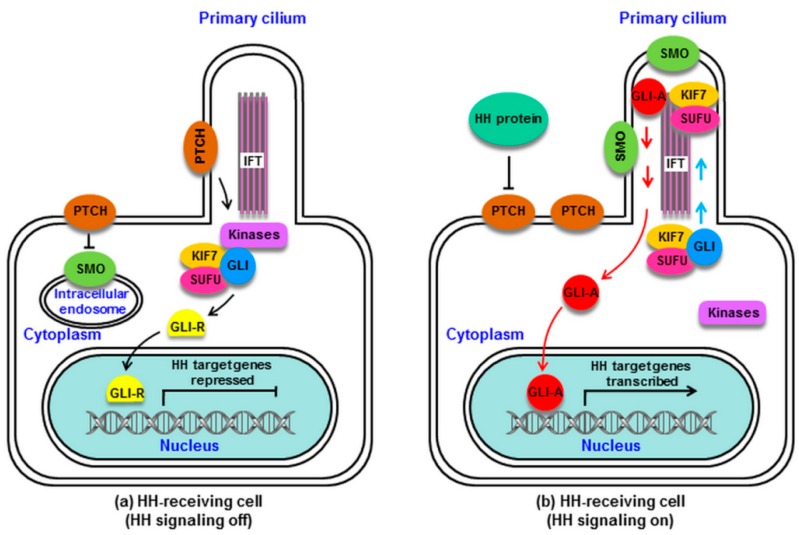Figure 1.
Mammalian hedgehog (HH) signaling. (a): Without HH proteins, patched (PTCH) is located at the cilium of the HH-receiving cell, and smoothened (SMO) remains distant from the cilium. PTCH inhibits SMO via preventing its cilial entry. Several kinases (PKA, CKI, GSK3) are recruited by the GLI/suppressor of fused (SUFU)/kinesin family protein 7 (KIF7) complex and activated by PTCH at the base of the cilium. GLI is phosphorylated by these kinases, which promotes its processing into the repressor GLI-R, which undergoes nuclear translocation to block HH target gene transcription. (b): HH protein binding to PTCH relieves SMO inhibition. PTCH is displaced from the cilium, and SMO accumulates in the cilium and converts from an inactive to active state. The GLI/SUFU/KIF7 complex is recruited by active SMO, traveling via intraflagellar transport (IFT) to the cilial top. SMO activation results in the detachment of GLI from SUFU and KIF7. GLI remains as an active GLI-A, which is translocated into the nucleus and goes on to induce HH target gene transcription. HH signaling is activated. CKI, casein kinase I; GLI, GLI protein (a zinc finger transcription factor); GLI-A, GLI activator; GLI-R, GLI repressor; GSK3, glycogen synthase kinase 3; IFT, intraflagellar transport protein; KIF7, kinesin family protein 7 (a minor inhibitor of GLI); PKA, protein kinase A; PTCH, Patched; SMO, Smoothened; SUFU, suppressor of fused (a major inhibitor of GLI).

